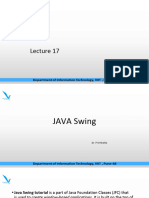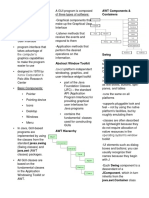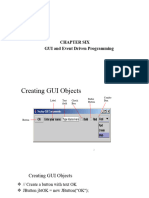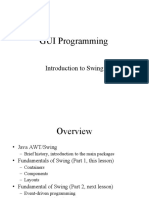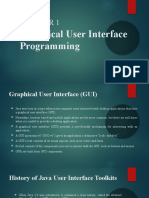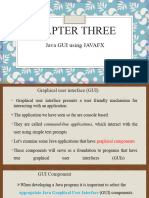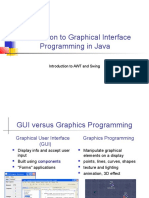0% found this document useful (0 votes)
74 views44 pagesJava AWT Swing
The document discusses implementing GUIs in Java using the Abstract Window Toolkit (AWT) and Swing frameworks. It provides an overview of the key components and concepts in AWT including basic UI components, event handling, graphics rendering, and layout managers. It then introduces Swing as a lighter-weight alternative to AWT, covering common Swing components, adding components to containers, setting layout managers, and handling events. Examples are provided throughout to demonstrate core AWT and Swing concepts.
Uploaded by
Suresh Kumar NCopyright
© © All Rights Reserved
We take content rights seriously. If you suspect this is your content, claim it here.
Available Formats
Download as PPT, PDF, TXT or read online on Scribd
0% found this document useful (0 votes)
74 views44 pagesJava AWT Swing
The document discusses implementing GUIs in Java using the Abstract Window Toolkit (AWT) and Swing frameworks. It provides an overview of the key components and concepts in AWT including basic UI components, event handling, graphics rendering, and layout managers. It then introduces Swing as a lighter-weight alternative to AWT, covering common Swing components, adding components to containers, setting layout managers, and handling events. Examples are provided throughout to demonstrate core AWT and Swing concepts.
Uploaded by
Suresh Kumar NCopyright
© © All Rights Reserved
We take content rights seriously. If you suspect this is your content, claim it here.
Available Formats
Download as PPT, PDF, TXT or read online on Scribd
/ 44




